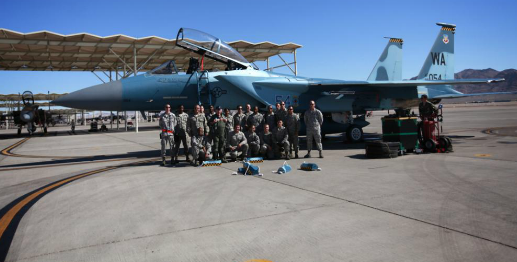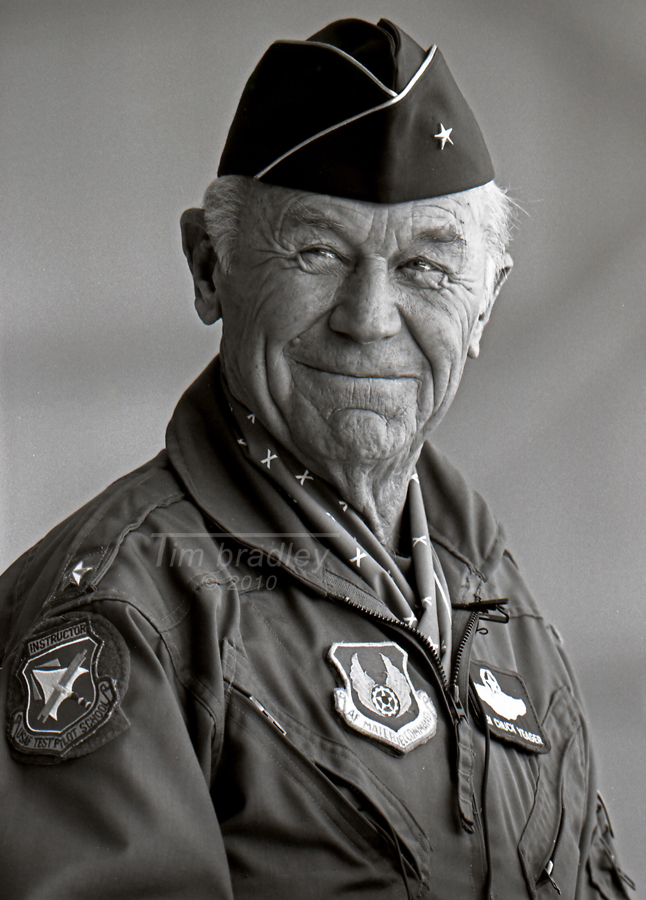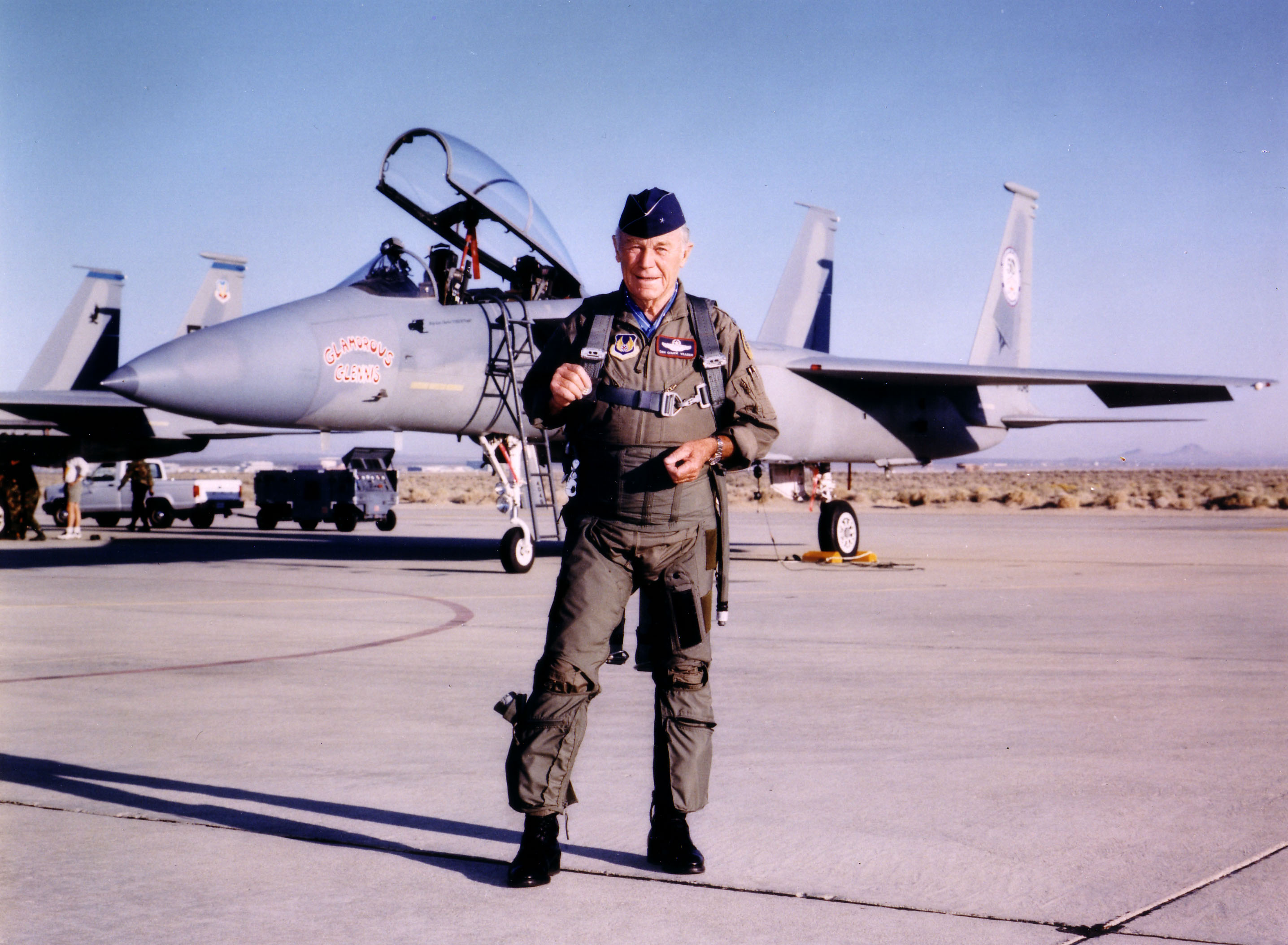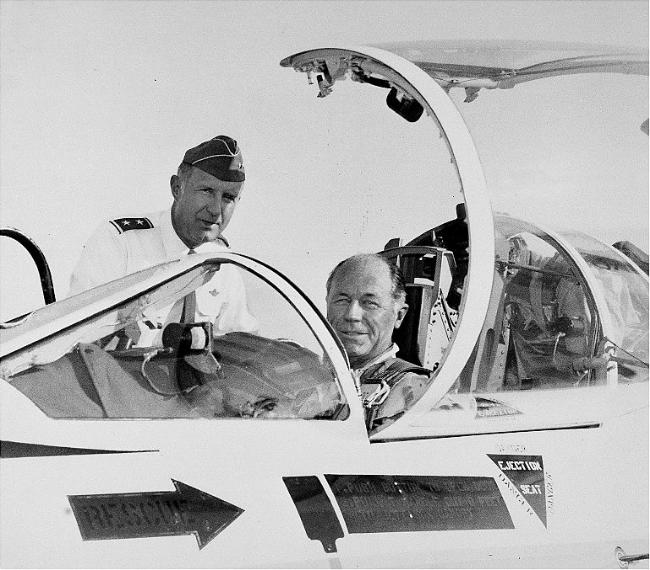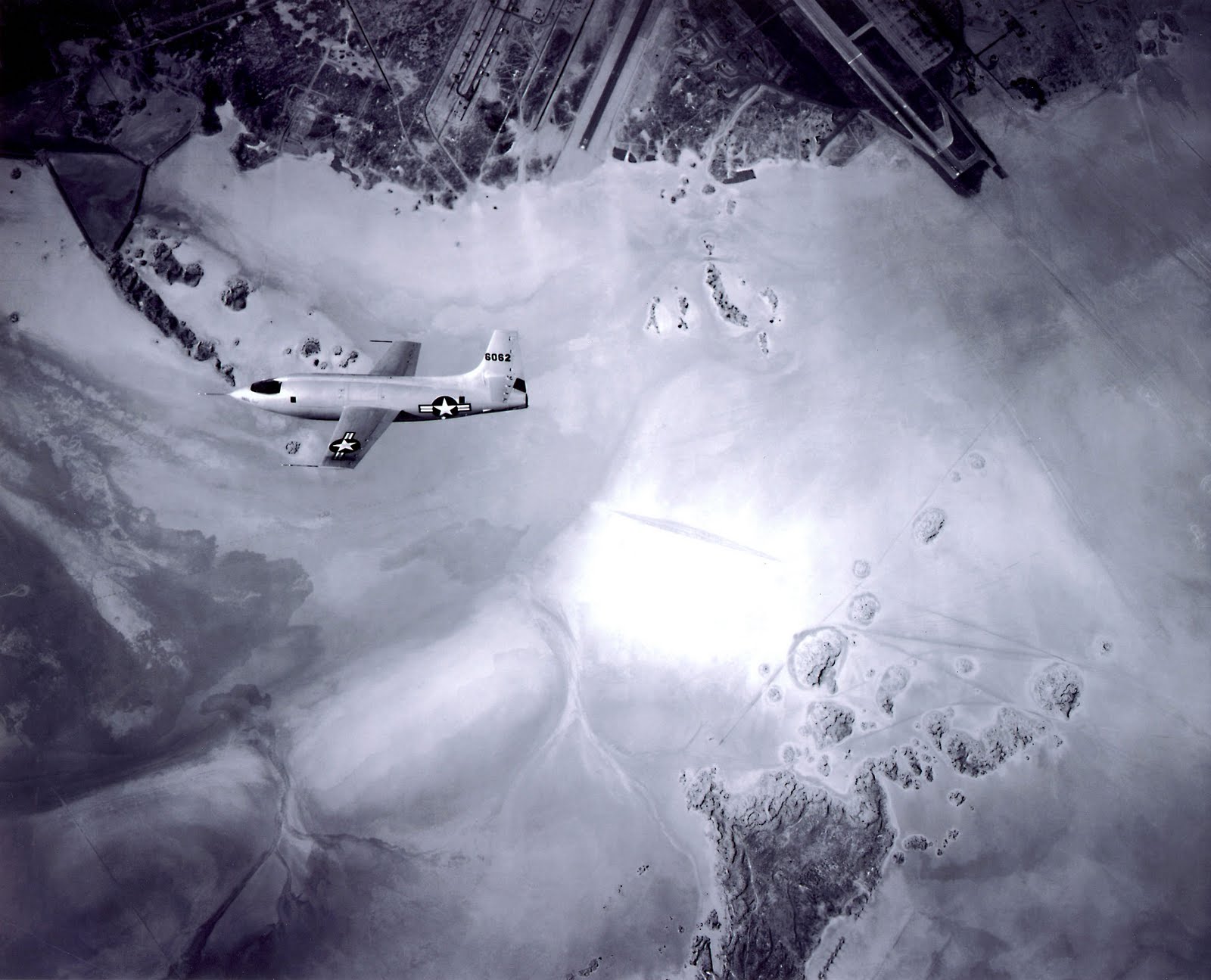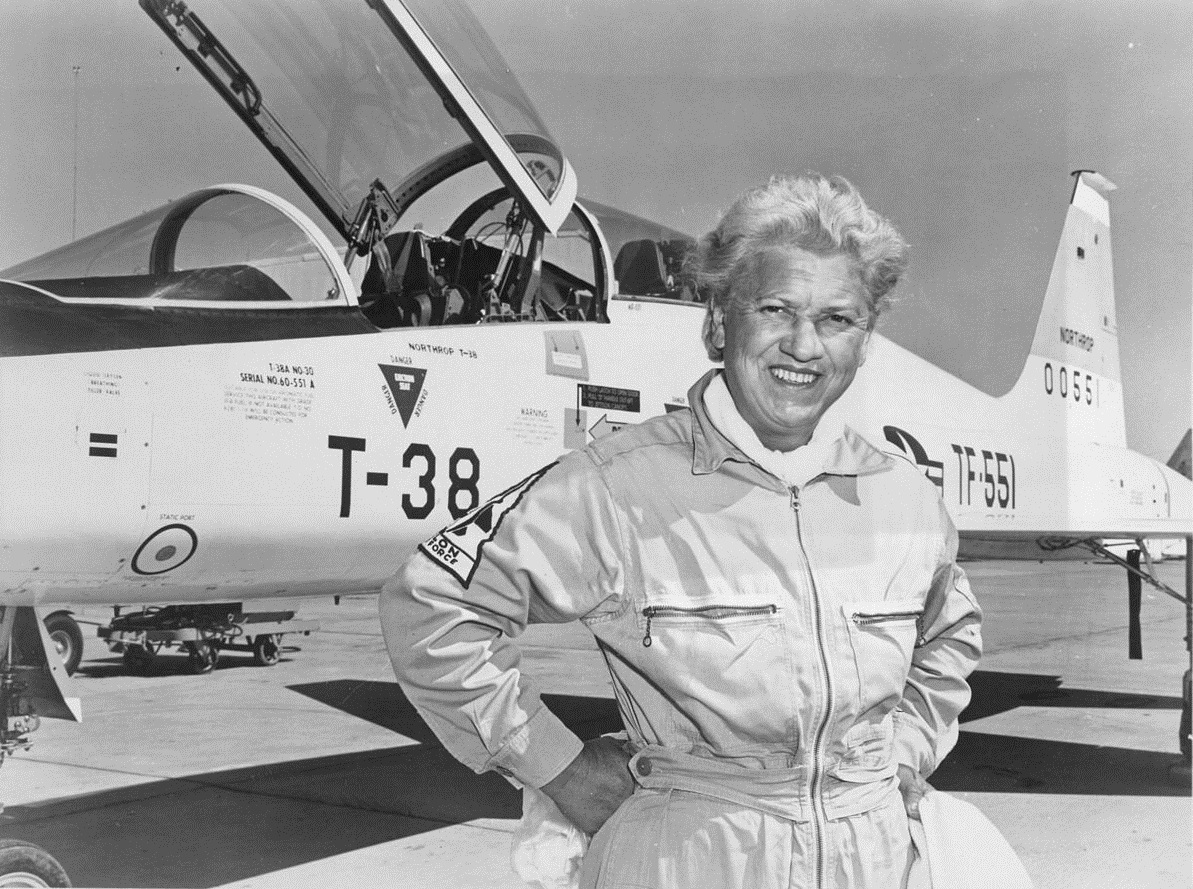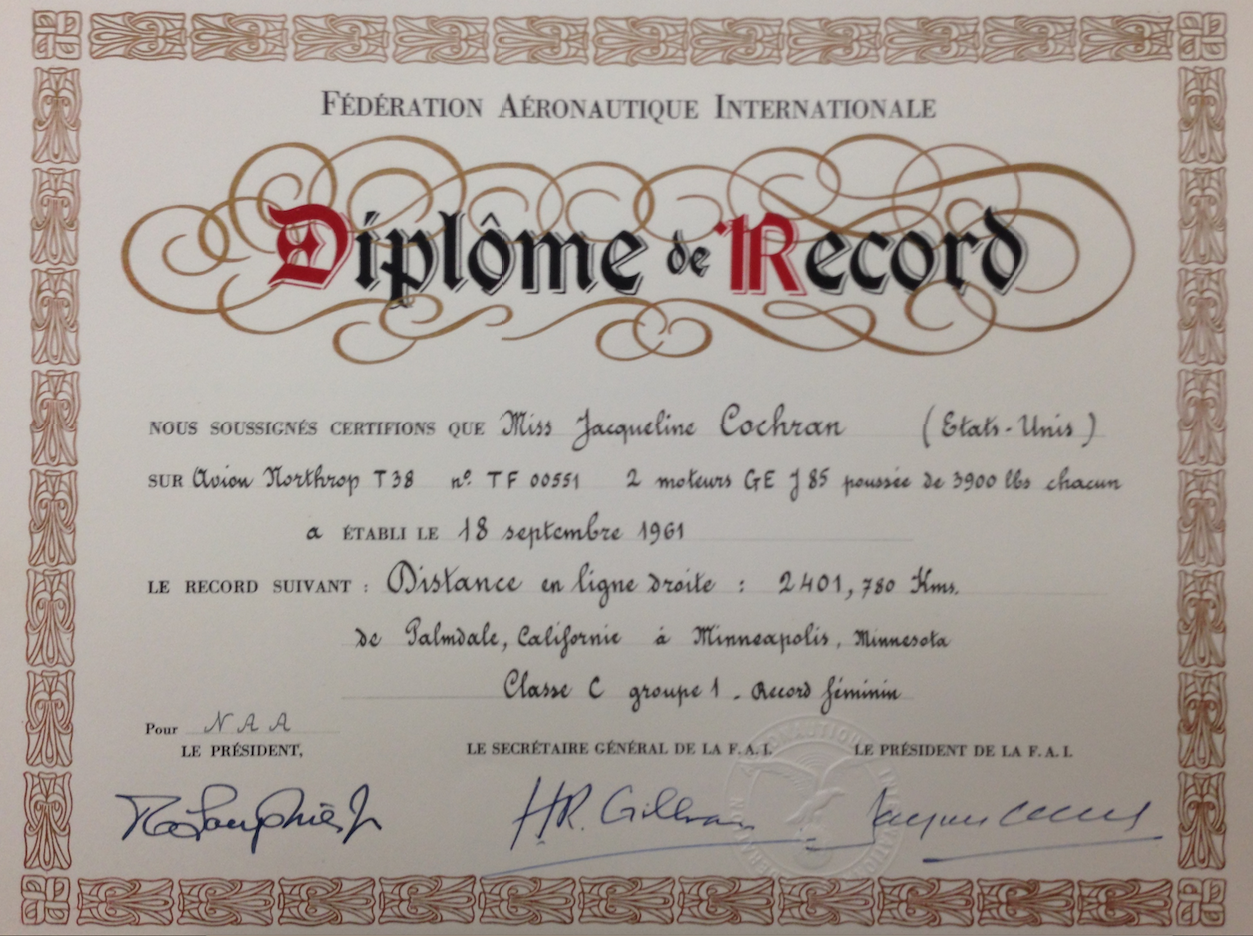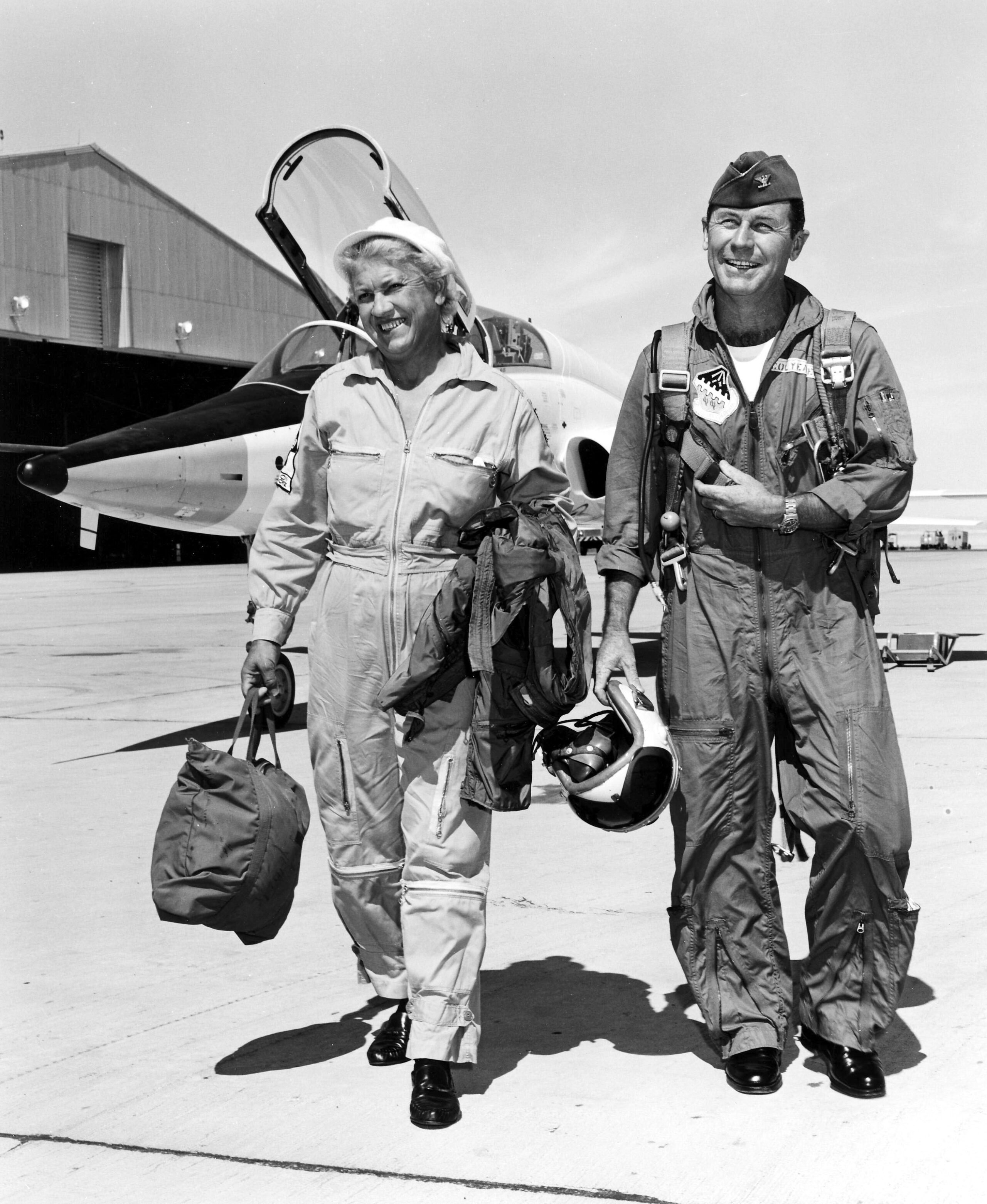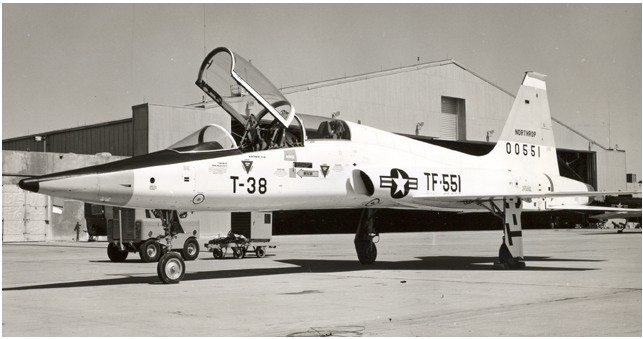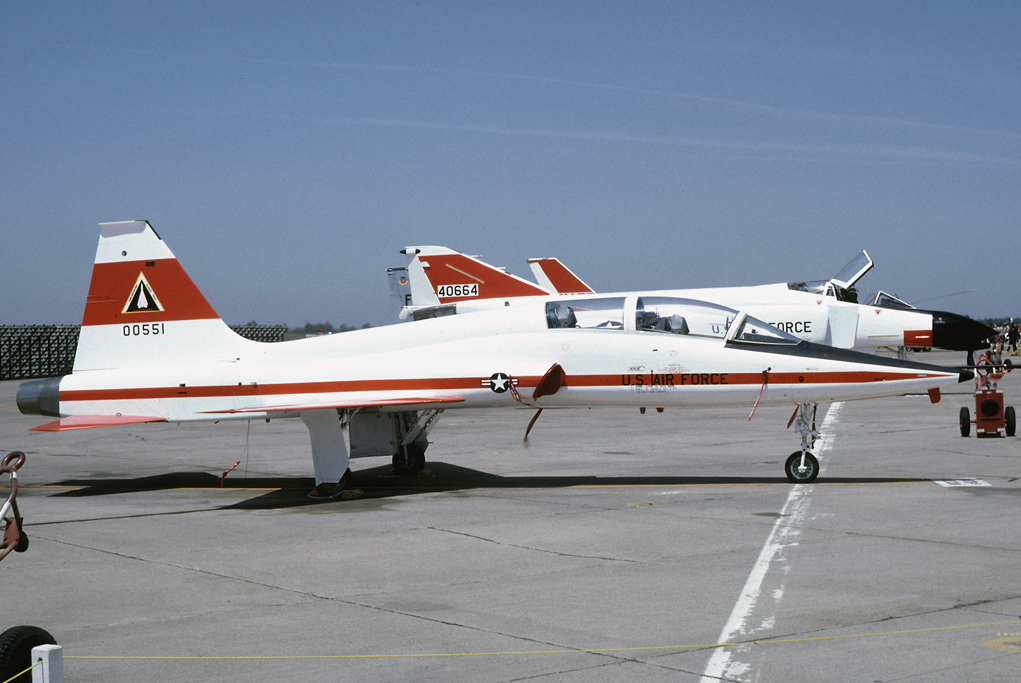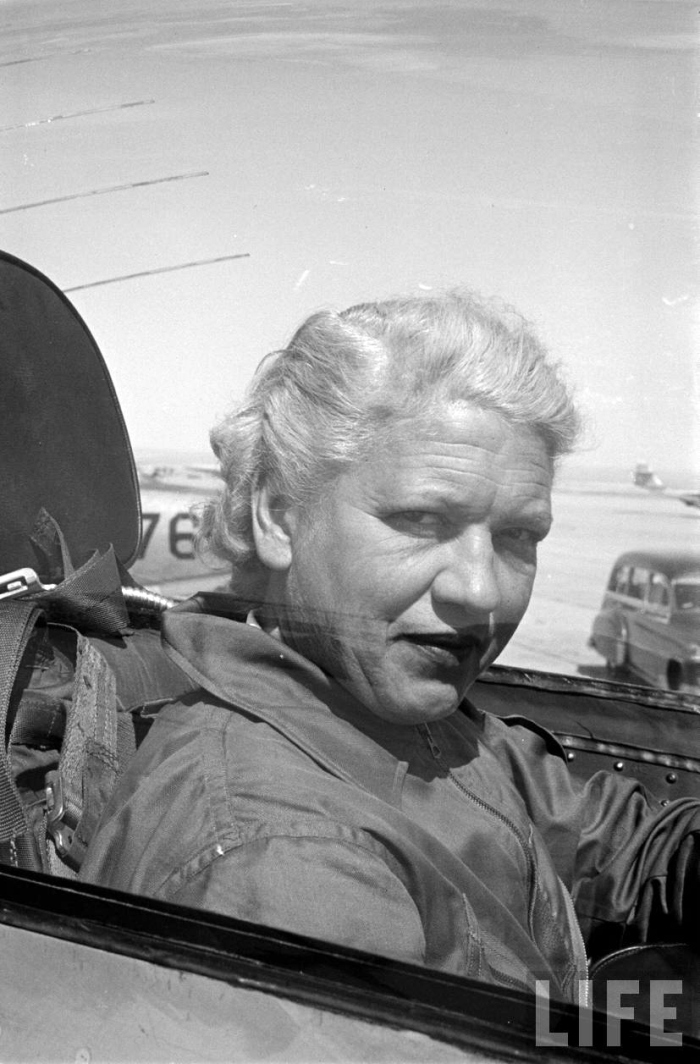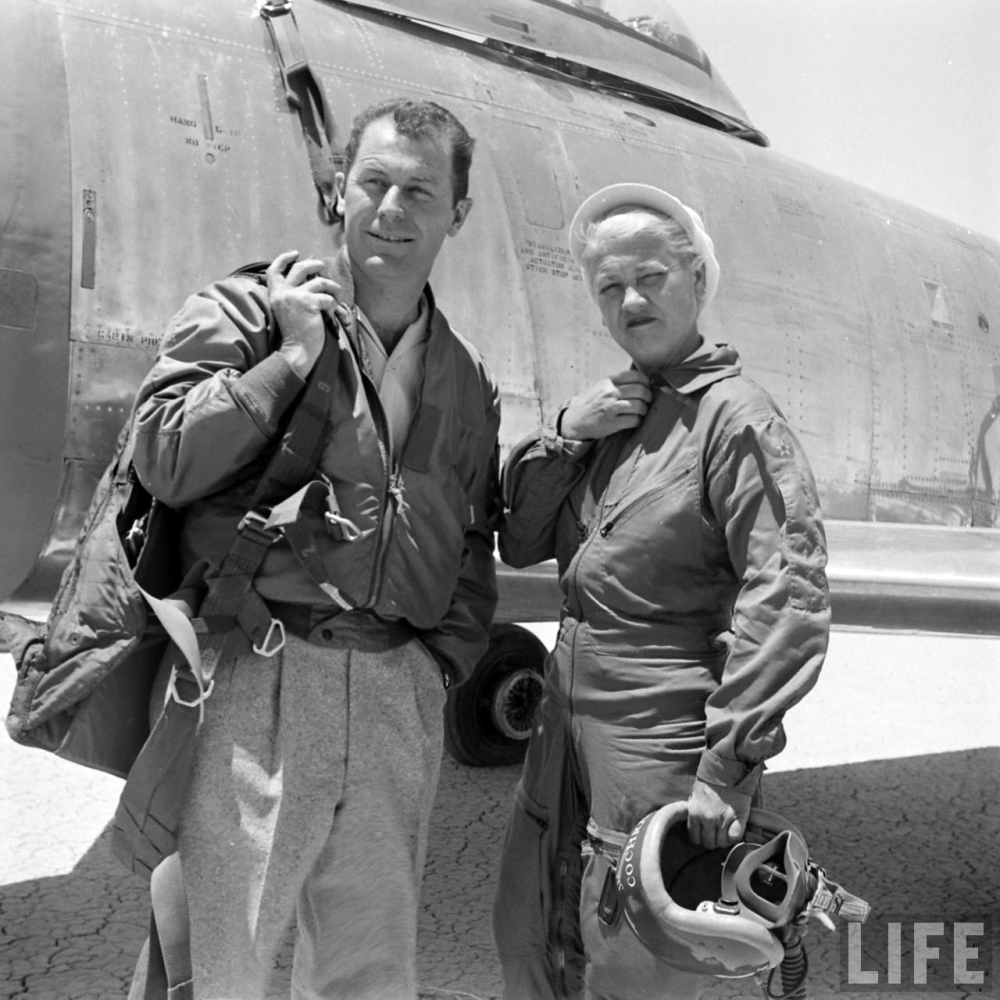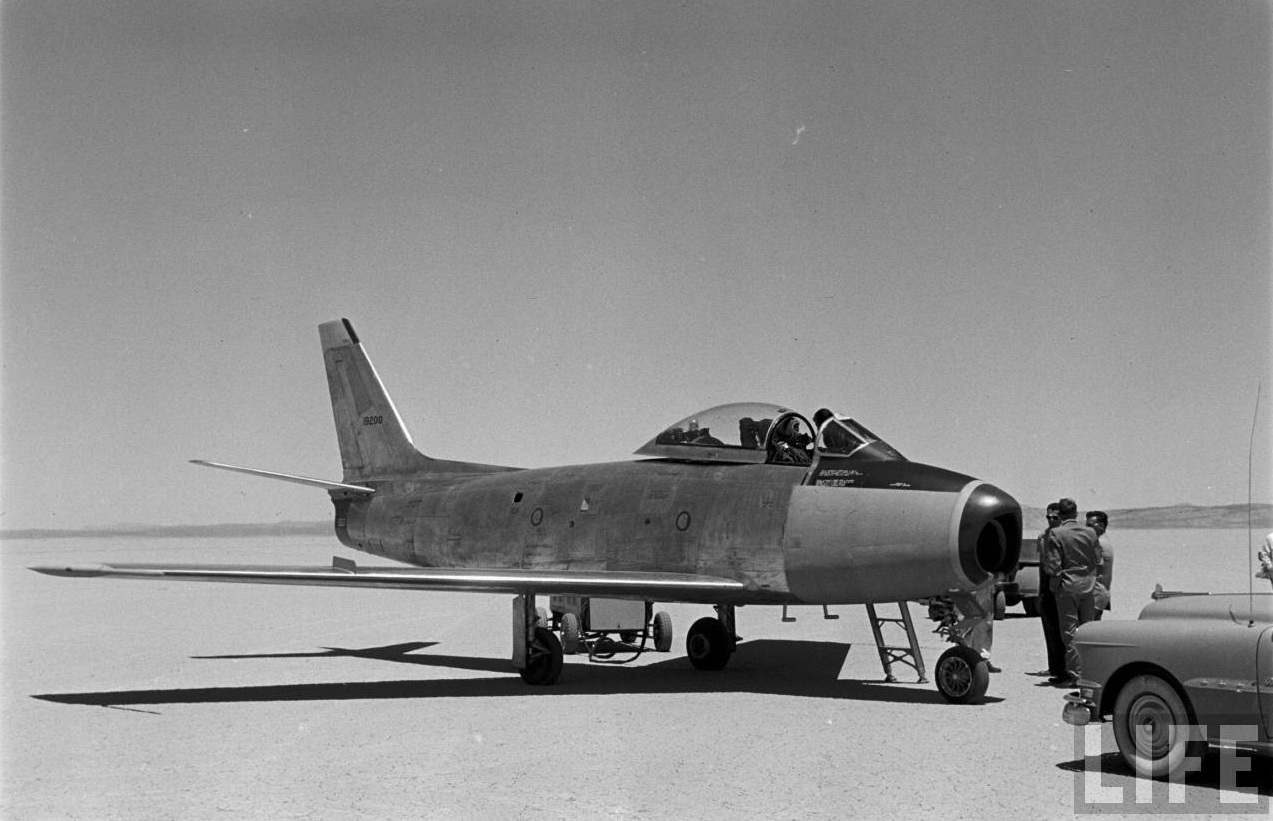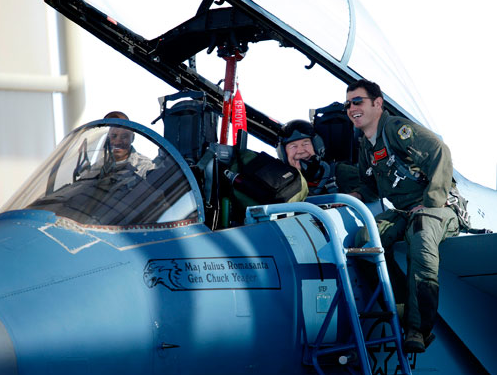
Yeager re-enacts historic flight to break sound barrier
Updated: Oct. 15, 2012 | 7:31 a.m.
Living up to his “right stuff” reputation as the wise-cracking test pilot and daring World War II hero, the legendary Chuck Yeager returned Sunday to Nellis Air Force Base after re-enacting in a blue-gray F-15D Eagle jet what he did 65 years ago in a mustard-colored X-1 rocket plane: break the sound barrier soaring high over California’s Mojave Desert.
Upon landing, with his escort pilot Capt. David Vincent taxiing the Eagle under plumes of water shot from two firetrucks, the 89-year-old Yeager climbed down a ladder from the cockpit. He did so to the applause of Nellis airmen, their families, his wife, Victoria, and film crews who documented the 65th anniversary of his most cherished feat as the first human to fly faster than sound.
What was going through his mind when Vincent, 30, throttled the aircraft into a blurry descent from 45,000 feet to 30,000 feet and leveled off with a speed of Mach 1.4, or more than 670 mph, sending a sonic boom across Edwards Flight Test Range?
“Nothing,” Yeager deadpanned. “Flying is flying. You just can’t add a lot to it.”
He said he just gazed out the jet’s clear canopy, looking down on the many dry lake beds that he landed on as a test pilot. Like the other times he achieved supersonic flight, the F-15D on Sunday sent a shock wave through the azure sky over the same patch of desert Yeager flew over for decades, at the same time he did it 65 years ago, 10:24 a.m.
Meanwhile, as Yeager was returning to Nellis, Austrian skydiver Felix Baumgartner, wearing a pressurized suit, emerged from the capsule of a towering, helium-filled balloon and leaped from a metal platform 128,000 feet over New Mexico near Roswell. In his descent he reached 833.9 mph or Mach 1.24.
Yeager was not impressed.
“Joe Kittinger did that years ago. He’s not doing anything new,” he said.
Yeager was referring to U.S. Air Force Capt. Joseph W. Kittinger, who, on Aug. 16, 1960, stepped from the gondola of a helium balloon at 102,800 feet and sped to 714 mph, breaking the sound barrier in a four-minute free fall through the stratosphere before his parachute opened.
The speed of sound is about 750 mph at sea level and roughly 660 mph at 30,000 feet altitude.
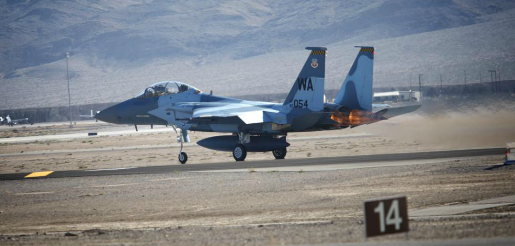
About an hour after his anniversary flight, Yeager spoke to U.S. Air Force pilots, airmen and their families gathered in a Nellis auditorium. At the end of his presentation, while fielding questions from the audience, Yeager used the occasion to mock Baumgartner’s supersonic achievement.
“Hey, what are you proving?” he asked, questioning the accuracy of Baumgartner’s reported speed.
“I don’t know where you stick a pitot tube in him,” he said, referring to an instrument that protrudes from the nose of an aircraft to measure its velocity.
Yeager said he loved flying the Bell X-1 rocket plane that vaulted him into aviation history on Oct. 14, 1947, but it’s no comparison to the twin-engine F-15 Eagle, a warplane that is more reliable and economical, he said, than the U.S. Air Force F-22 Raptor, a stealthy air-superiority jet, and the F-35 Joint Strike Fighter touted as the workhorse warplane of the future.
“If I was going to fight a war, I’d take an F-15 over anything we’ve got,” he said.
He said he chose to fly from Nellis instead of Edwards Air Force Base because the test center at Edwards didn’t have a two-seat, F-15 available and he didn’t want to fly an F-16 Fighting Falcon.
And this ace, who shot down five German Messerschmitt-109 fighter planes in a single day in October 1944, knows airplanes, having flown 180 different ones during his storied career.
He said by far the slowest one he’s flown was a Wright Flyer, like the one Orville and Wilbur Wright flew in their groundbreaking first powered flights at Kitty Hawk, N.C., in 1903.
“It didn’t go faster than sound. It just sounded faster than it was flying,” Yeager recalled.
His fame soared in 1979, when Chuck Yeager, who was born Charles Elwood Yeager, became a household name with author Tom Wolfe’s book, “The Right Stuff.” The book, which was later made into a movie, recounted the story of the day the bullet-shaped Bell X-1 rocket plane made history when Yeager guided it beyond Mach 1. The plane was strapped to the belly of a B-29 bomber and released at a high altitude before he powered it up for the record-setting feat.
“The most important thing that I did was fly the X-1 through Mach 1,” he told reporters gathered on the Nellis ramp Sunday.
“Up until that time we had never been able to get above the speed of sound. We had problems with controls and stuff like that. Finally, on October 14, ’47 we succeeded in pushing Mach 1 and it opened up space to us,” he said.
Just before he took off Sunday, his wife, Victoria Yeager, shared her excitement and noted the parallel of having Vincent, a young captain, have the honor of being the escort pilot like her husband was in 1947.
“This is so cool,” she said. “This captain is as much of a maverick as General Yeager is. He (Yeager) is in the back seat where the instructor pilot sits because he’s the elder statesman.”
After the flight, Vincent remarked about his role in the re-enactment flight and how Yeager made him feel at ease.
He said Yeager held up “better than I did” during the flight and made the chase plane’s pilot, Col. Pete Ford, jealous because of all the stories that Yeager told him in the cockpit.
“He was talking it up like he was back home,” said Vincent, who flies with the 65th Aggressor Squadron.
“That was the best flight of my life. It was a dream come true. … And to be there with one of the world’s greatest plots was an absolute honor,” he said.
“It was like being there with Christopher Columbus or Orville and Wilbur Wright. He broke the sound barrier, something that everyone was terrified of doing. He had the bravery and skill to be able to do that. It was amazing,” Vincent said.
Contact reporter Keith Rogers at [email protected] or 702-383-0308.
